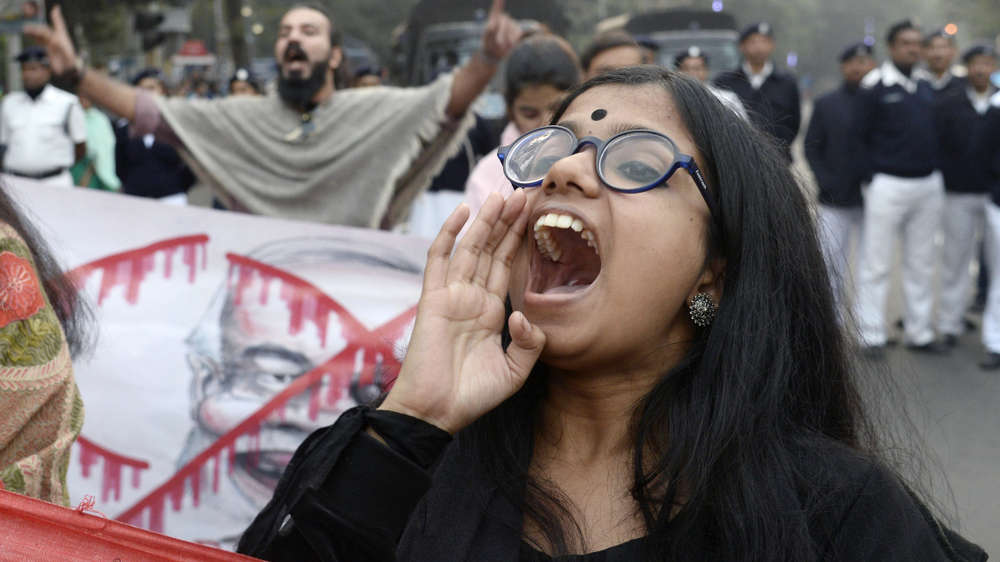A new dimension of politics that has emerged under the current regime is that of intra-elite conflict. The current political regime is not only building a majoritarian polity but is also replacing the social elites that came into being in the post-Independence period with the ushering in of constitutional values, liberal institutions and modernity with traditional elites. The latter are characterized by an old status, not class or economic power. Traditional elites visualize themselves more as cultural rather than economic elites. They remain traditional in their outlook but not necessarily in their lifestyle. This constituency includes caste Hindus who wish to preserve caste prejudices and caste distinctions, believe in natural superiority, and value ascriptive identities. They had been sidelined by constitutional reforms, the discourse of secularism and reservations, new gender and LGBT rights, global cosmopolitanism and other progressive legislations.
The Congress represented the new elites with the suspension of the privy purse, the dissolution of princely states and the nationalization of resources. The BJP-RSS combine represents the elites that got marginalized. The Congress, too, included the old elites, such as former maharajas and zamindars, but with the pre-condition that they would have to change their outlook in favour of a new, progressive, secular and inclusive nationalism. This progressive spirit created a new middle class that was liberal as well as new social elites comprising scholars, artists, film stars, global investors, bureaucrats and the national bourgeoisie.
The BJP-RSS is seeking to combine the traditional elites with comprador corporations. The only problem in connecting old and new elites is the discourse on growth, market reforms and urbanization. The new elites endorse ‘progressive neoliberalism’, which, today, is being challenged by the ‘conservative neoliberalism’ of the traditional elites. Traditional elites have succeeded in packaging themselves as ‘cultural subalterns’ who have been short-changed by history and unfairly displaced by the new elites. They are striving to combine their interests with the demands of the subaltern castes, such as OBCs and sections of the Dalits, through a predominantly cultural idiom. The rhetoric of the traditional elites is also anti-elitist and mobilizes the antipathy against progressive elites and liberal institutions — the proverbial ‘Khan Market Gang’ or ‘Lutyens’ Delhi’. The freedoms they espouse, be it LGBT rights or those of religious minorities, is projected as indifference, selfish and, therefore, ‘anti-national’. The subalterns would end up being shoved into old social hierarchies but as of today they tend to identify with the traditional elites.
The progressive outlook of the new elites is inclusive, but there are limits to this inclusion. The traditional elites are able to resonate with the subaltern castes in spite of their exclusionary and hierarchical social vision because it reinforces traditional privileges, such as gender within family and status within rural hinterlands, as well as religious-majoritarian gratification. There has also been political representation offered to many of these castes and communities.
There are new training programmes for bureaucrats; the national bourgeoisie has been displaced by privileged protection to chosen corporations, thereby marking a shift in favour of those aligned to a conservative outlook. The recent witch-hunt against academics, journalists and Bollywood stars has to be seen in the light of the displacement of progressive elites. This will also include the targeting of political representatives. This is not merely the reining in of Opposition parties but also a shift among elites. We are witnessing a new kind of intra-elite conflict.
The crisis of modernity and its inability to be inclusive in its cohabitation with capitalism and neoliberalism have left many social groups excluded. The philosopher, Michael Sandel, points out in The Tyranny of Merit that the language and policy of meritocracy implies that the new elite are born out of modern education. The traditional elites are thus undermining the importance of modern education itself. This resistance is visible in the National Education Policy, 2020.
The traditional elites are reasserting themselves by using the tensions and the unresolved conflicts within the progressive social order to legitimize their conservative social ethos. The progressive elites are, therefore, facing a crisis of legitimacy. They are disconnected from the subaltern segment because of the cultural idiom and are unable to offer a model of politics that is truly inclusive. The traditional elites are better connected through culture even if they are conservative and detrimental to the interests of a majority of social groups. Traditional elites will eventually become even more exclusionary than modern elites who hold some degree of respect for diversity and redistribution of social opportunities. The kind of challenge that will confront the traditional elites will determine the course of Indian democracy in the near future.











